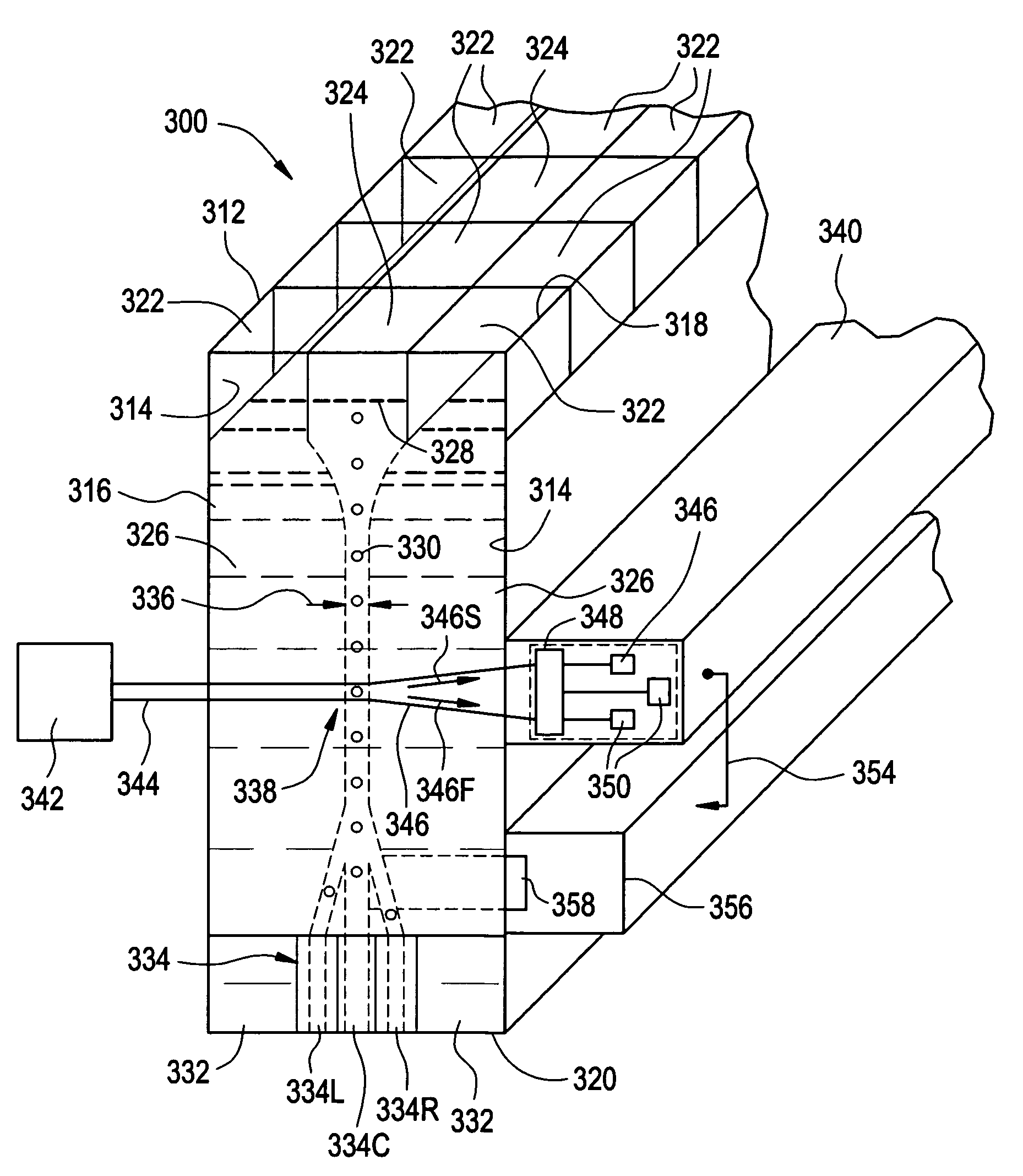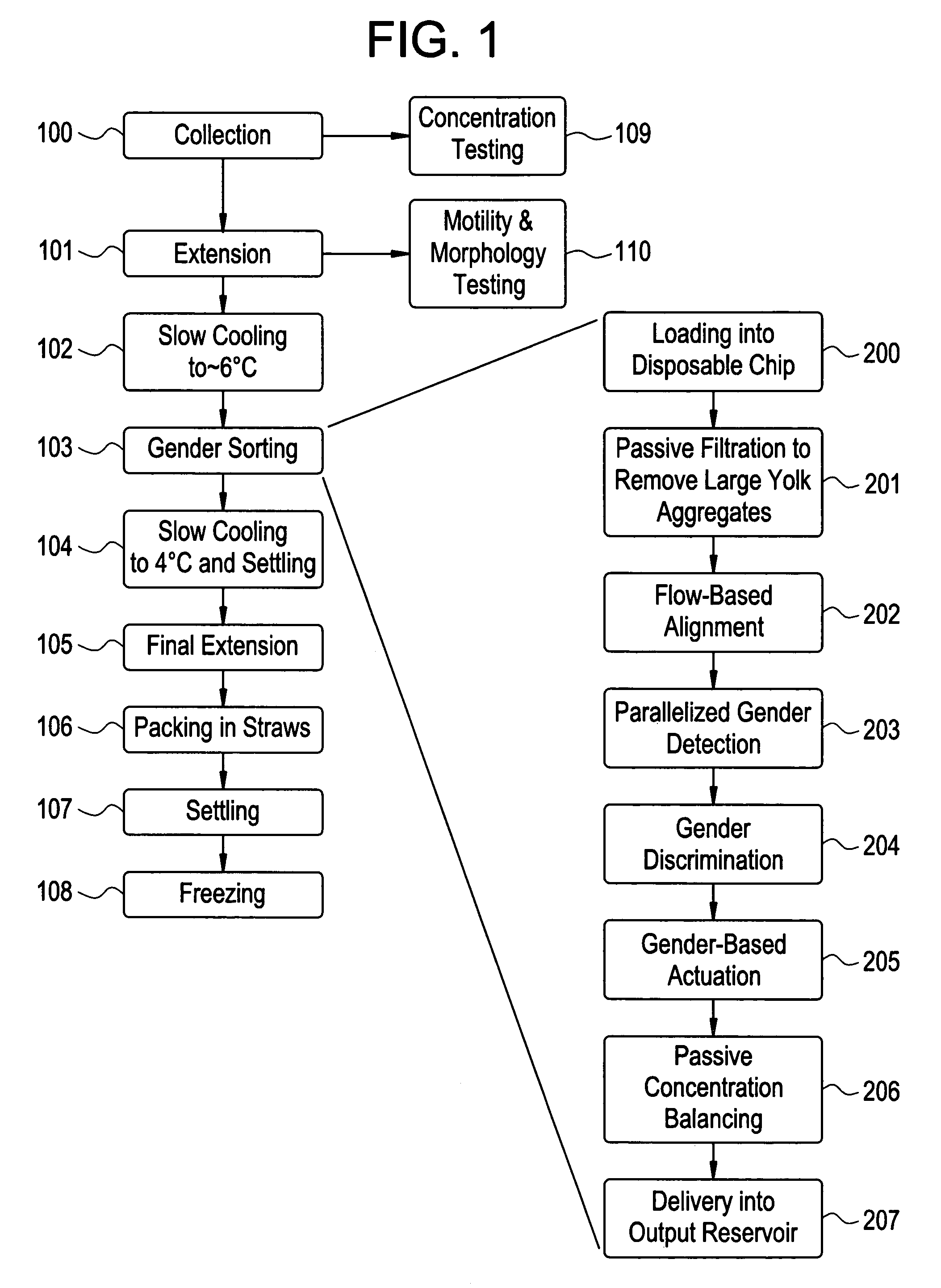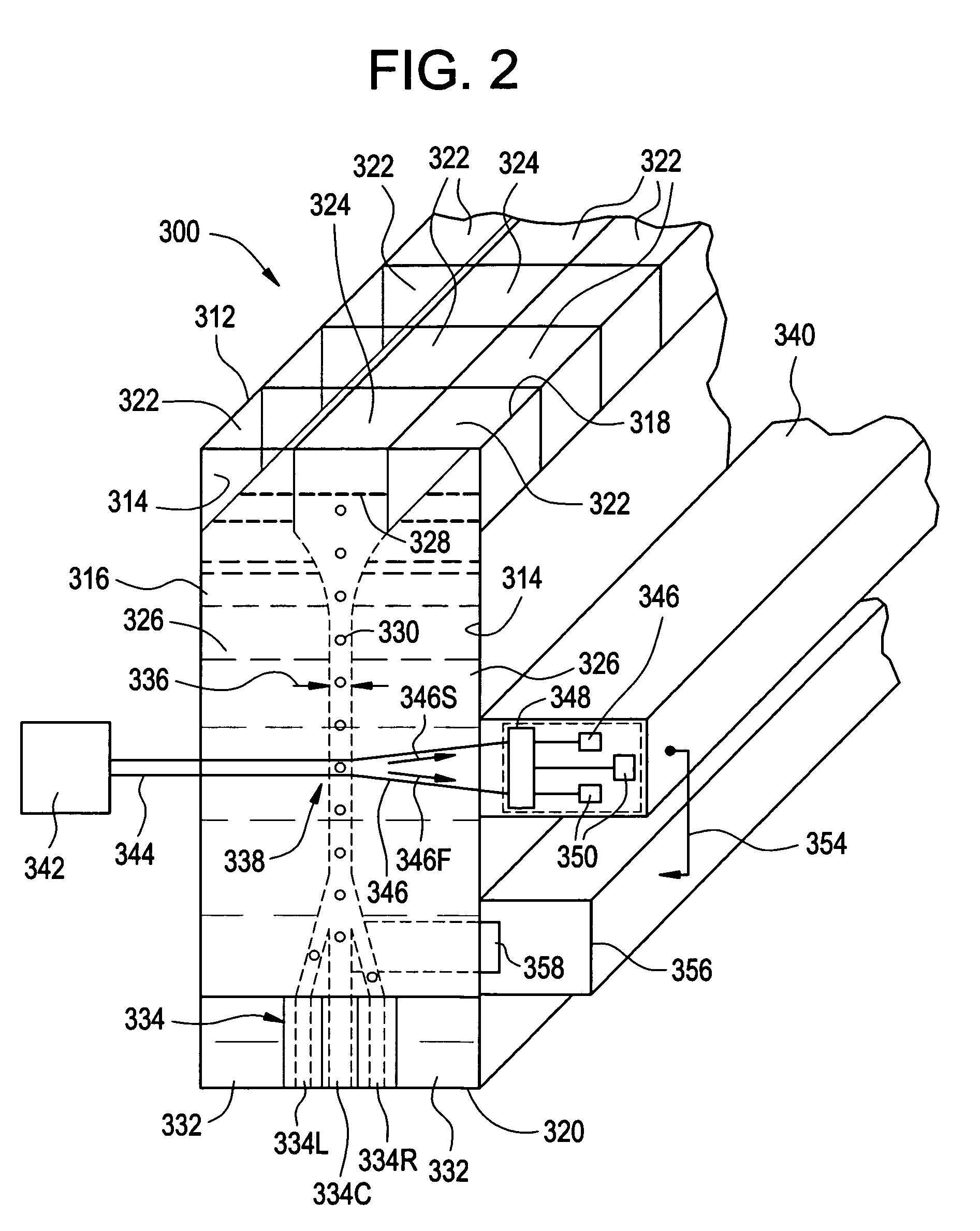Method and apparatus for sorting cells
a sorter and cell technology, applied in biochemistry apparatus and processes, instruments, biomass after-treatment, etc., can solve the problems of inefficiency and time-consuming, cells cannot be reliably imaged and characterized, and the flow rate of 5000 sperm cells per second is inefficient and time-consuming
- Summary
- Abstract
- Description
- Claims
- Application Information
AI Technical Summary
Benefits of technology
Problems solved by technology
Method used
Image
Examples
Embodiment Construction
[0023]FIG. 1. illustrates a flow diagram setting forth the steps for characterizing, sorting and processing objects, for cryogenic preservation, particularly bovine sperm cells.
[0024]The first stage from collection 100, extension 101, to slow cooling 102, is the subject of various procedures, some of which are novel and others of which are known.
[0025]A novel system for preparing cells for sorting is set forth in copending U.S. patent application Serial Number (to be assigned), entitled: “Novel Method For In Vivo Staining of Cells for Identification and Sorting”, filed on Feb. 1, 2005, the teachings of which are incorporated herein by reference.
[0026]The steps include loading a sample into a disposable chip 200; filtering the sample to remove large aggregate material 201, such as yolk aggregates; employing flow based alignment 202 as set forth hereinafter; employing parallelized gender detection 203, discrimination (i.e., gender discrimination 204) and actuation (i.e., gender actuat...
PUM
| Property | Measurement | Unit |
|---|---|---|
| width | aaaaa | aaaaa |
| temperature | aaaaa | aaaaa |
| flow rates | aaaaa | aaaaa |
Abstract
Description
Claims
Application Information
 Login to View More
Login to View More - R&D
- Intellectual Property
- Life Sciences
- Materials
- Tech Scout
- Unparalleled Data Quality
- Higher Quality Content
- 60% Fewer Hallucinations
Browse by: Latest US Patents, China's latest patents, Technical Efficacy Thesaurus, Application Domain, Technology Topic, Popular Technical Reports.
© 2025 PatSnap. All rights reserved.Legal|Privacy policy|Modern Slavery Act Transparency Statement|Sitemap|About US| Contact US: help@patsnap.com



